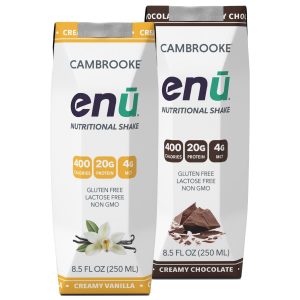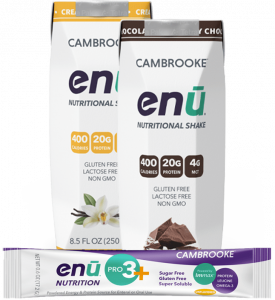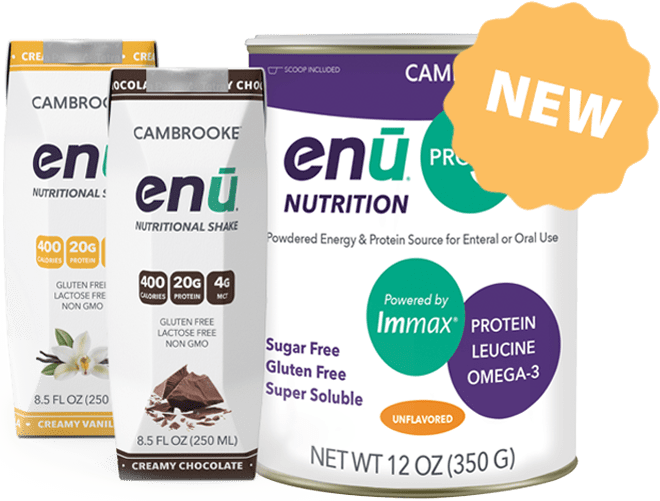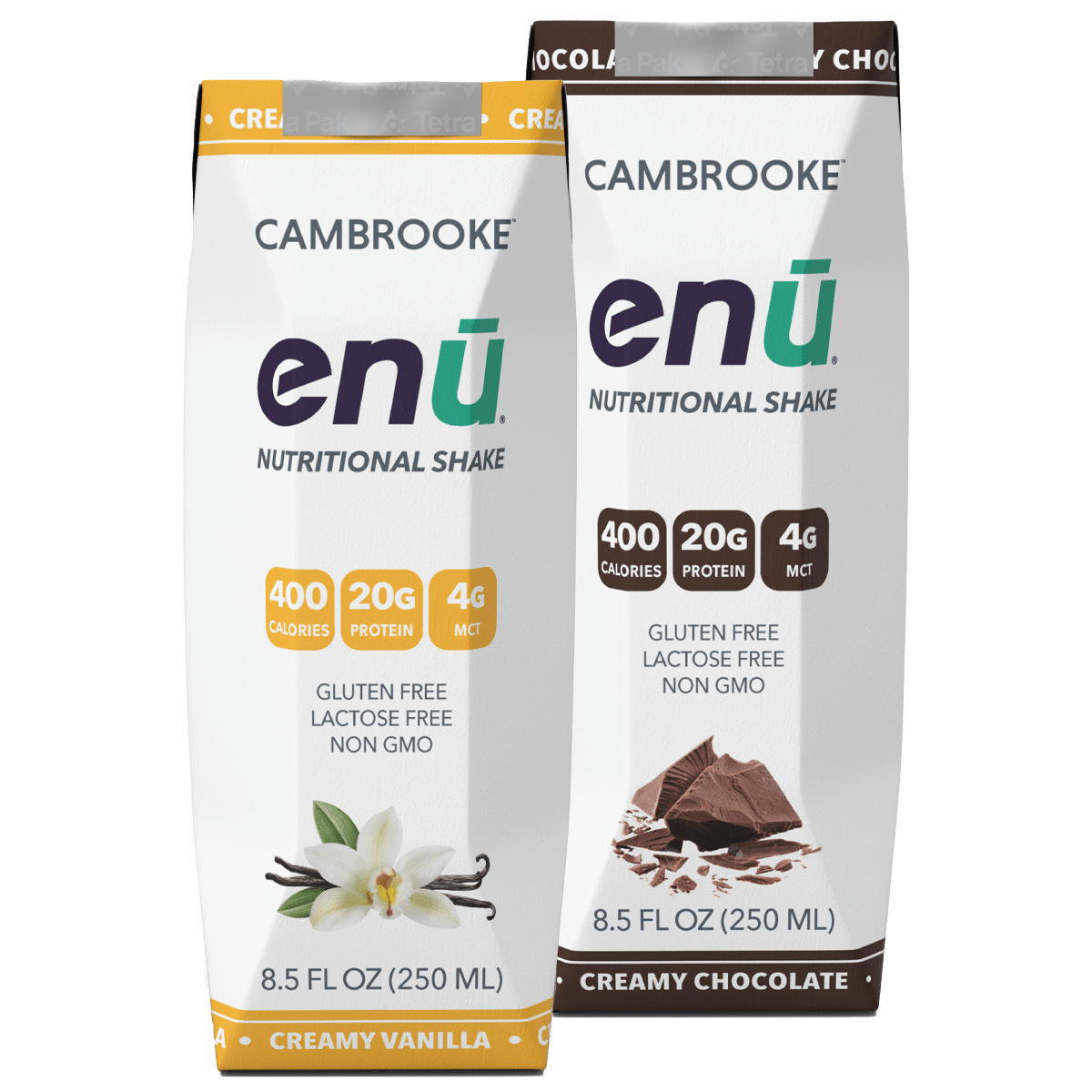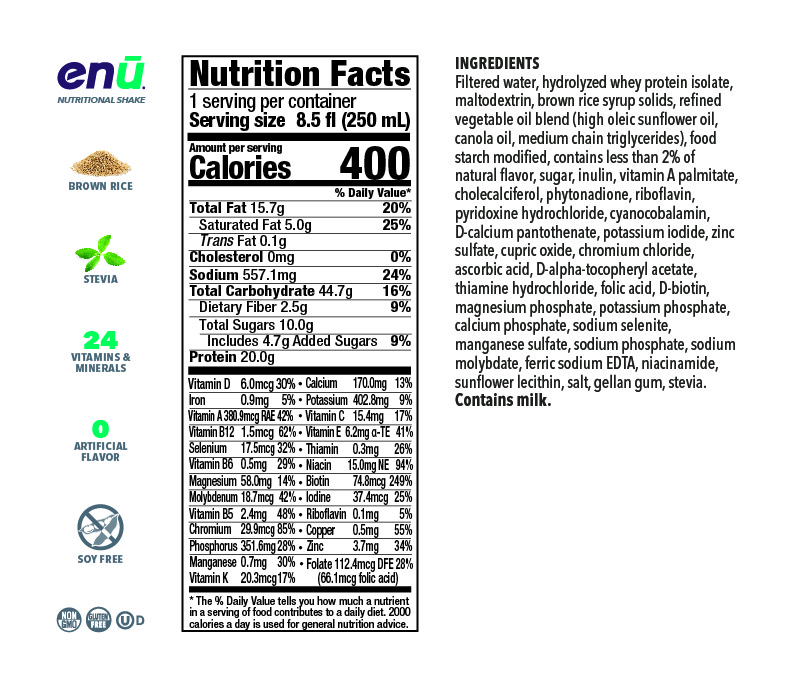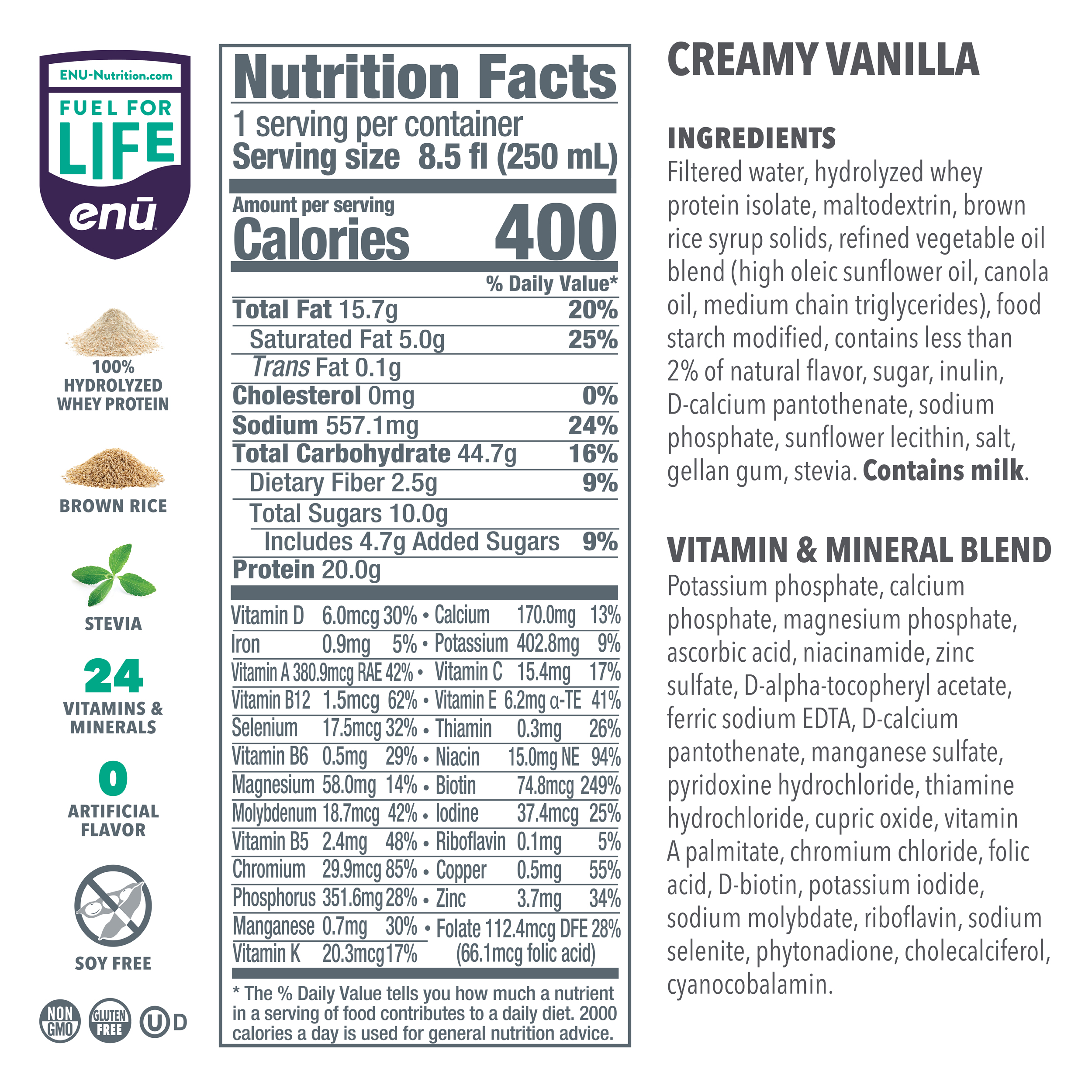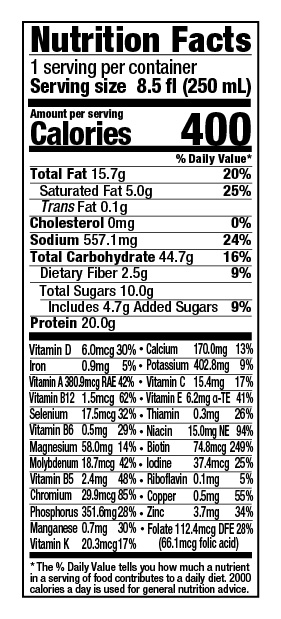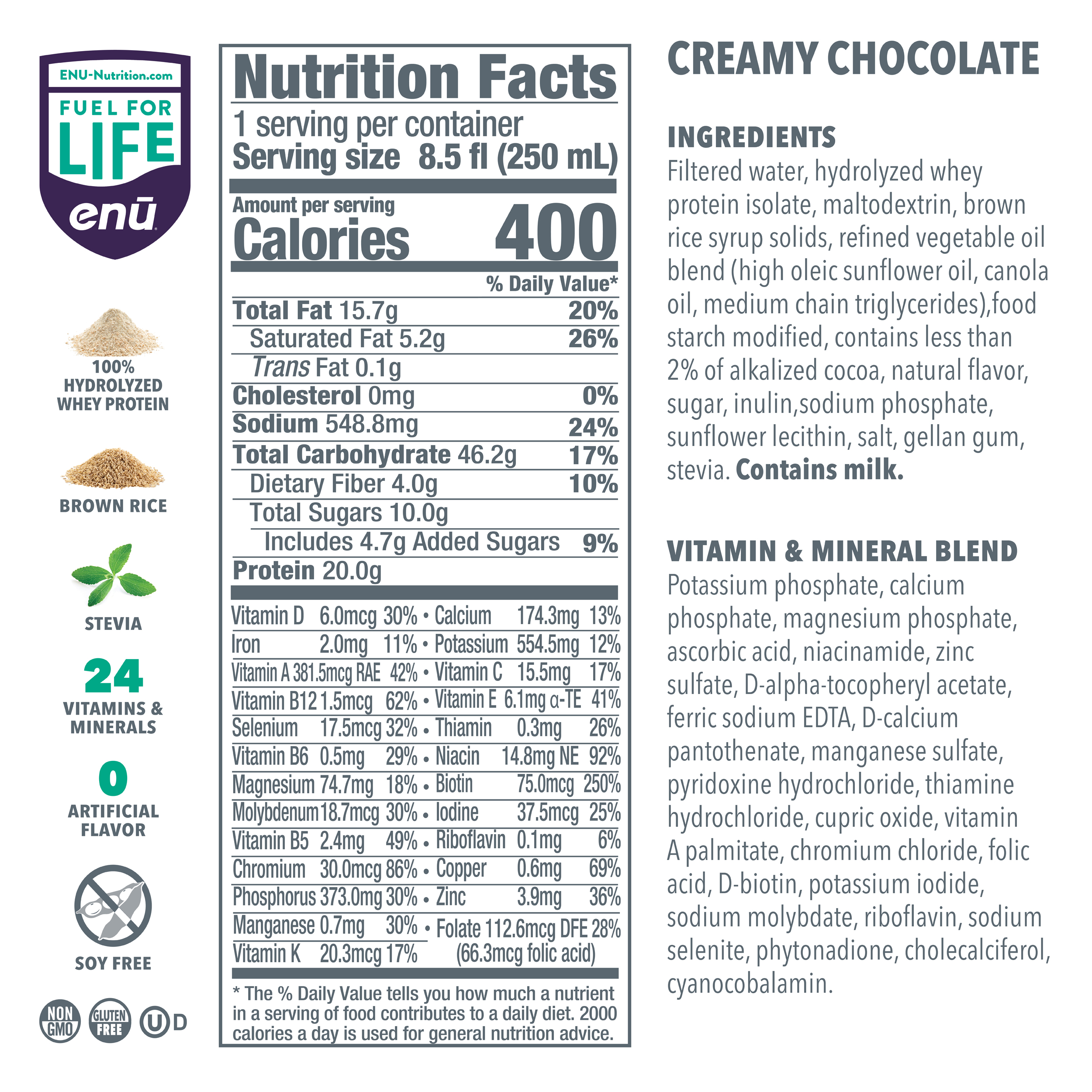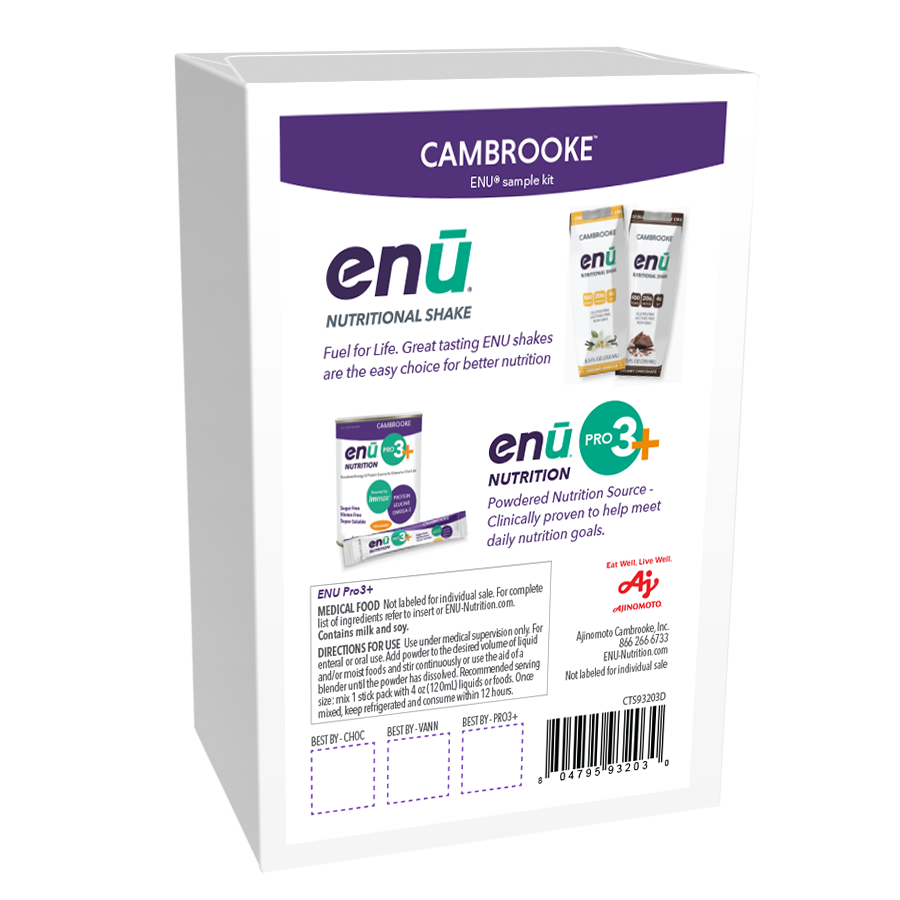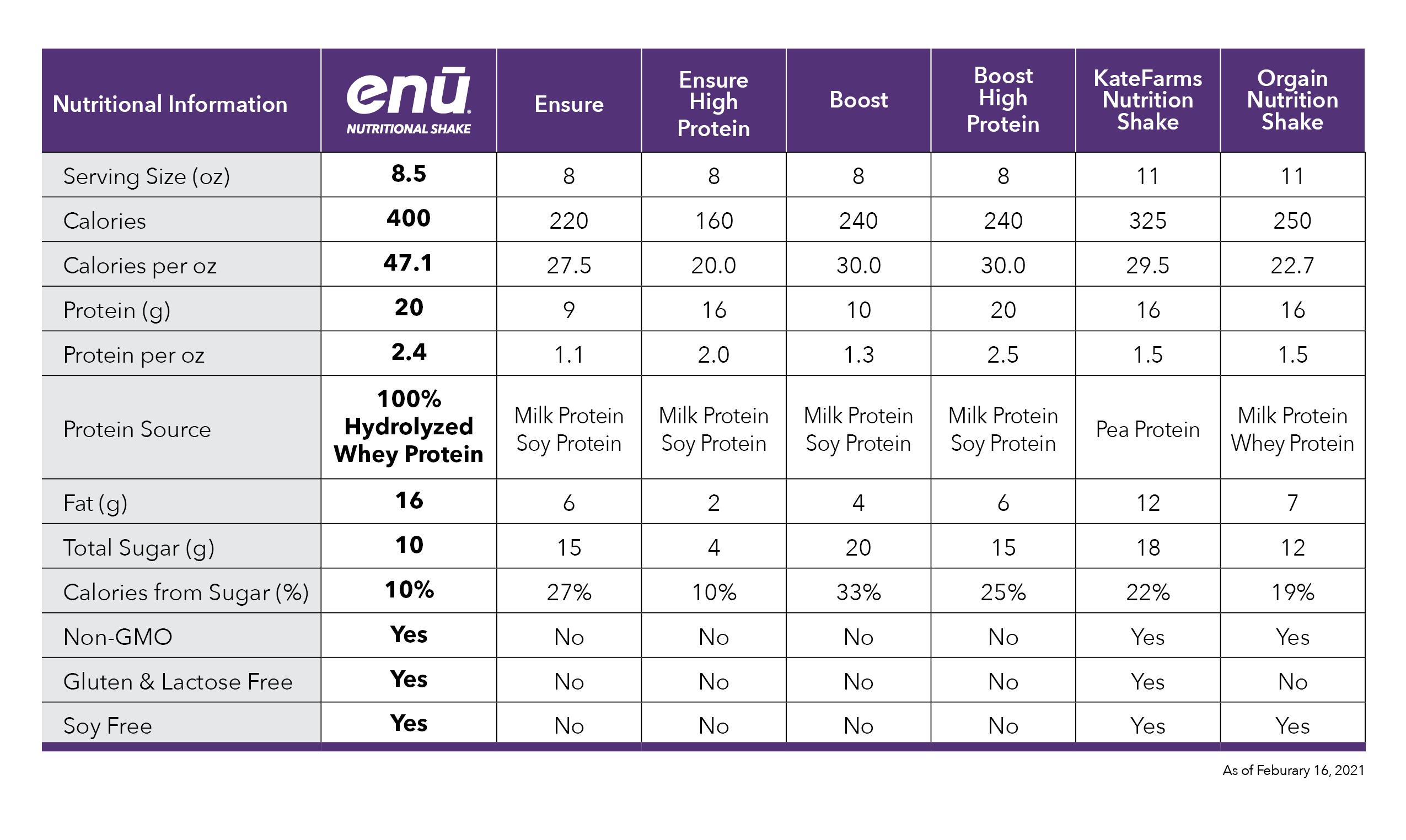
Get a FREE
ENU Intro Pack*
*Just Pay $2.00 Shipping
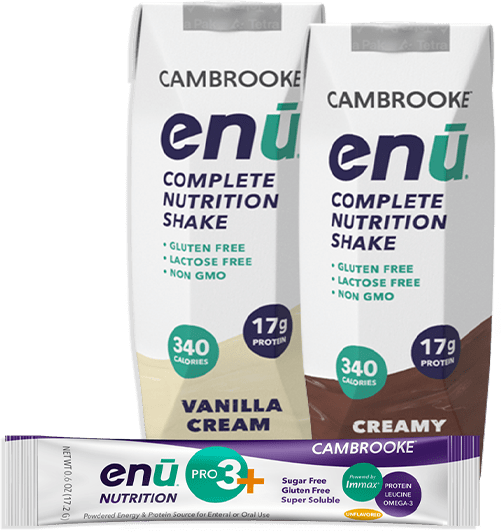
5 Scary Sounding Food Additives You Don’t Need to Worry About
Alissa Rumsey MS, RD, CDN, CSCS
Not all food additives are created equal. While there are some potentially harmful ingredients in some food products, many food additives sound scarier than they are. These five food additives are frequently found in packaged food and drinks and are safe to consume.
Cellulose
Cellulose is a complex carbohydrate molecule that comes from plants. While you could technically extract it from any plant, most cellulose comes from wood pulp. While that might sound strange, cellulose is made from carbon, hydrogen and oxygen and is the building block of plant cell walls, giving them structure and stability. It does the same for food products while also helping foods to retain moisture. It adds mouth feel without the use of fat or sugar. It is an insoluble dietary fiber found in nature, and may have beneficial effects on cholesterol levels. In our bodies, it passes through our GI tracts unabsorbed.
Xanthan gum
This is a sugar-like substance, made by feeding starch (usually corn sugar in the US, sometimes wheat) to bacteria. It is used as a thickener and emulsifier, helping ingredients blend better and have a longer shelf life. It is used in salad dressings, sauces and is what gives most gluten-free bread and baked goods a texture similar to wheat-based bread. Some people are allergic, but if you don’t have an allergy to it this is a harmless additive.
Ascorbyl palmitate
This is a fat-soluble form of vitamin C. It helps to increase the shelf life of foods and keep food color lasting longer. When you consume it, it breaks down into vitamin C (ascorbic acid) and palmitate, fat. You absorb some of the vitamin C and digest the palmitate (though the amount in foods is so little that the fat content is negligible).
Lecithin
This shows up in a lot of ingredient lists. It is a type of fat usually derived from eggs, soybeans (“soy lecithin” on ingredient lists) or sunflower oil. It’s used as an emulsifier to keep ingredients from separating (such as salad dressing), as a stabilizer (often in bread), a thickener and as a preservative. Lecithin is a source of choline, a nutrient essential for our bodies cell and nerve health. Soy Lecithin is a natural product, extracted from what is left over after pressing soybean oil. If you don’t have soy or egg allergies, lecithin is safe.
Inulin
Also known as “chicory root” or “chicory root extract,” inulin is type f a plant-based fiber. It is an indigestible carbohydrate, which means it travels through your GI tract intact until it gets to your colon. Once there, inulin is fermented by your gut bacteria, making it a prebiotic that helps contribute to a healthy gut. Inulin occurs naturally in some vegetables, like asparagus and artichokes. The type found in food products, like granola bars, low-fat ice cream and cereals come from the roots of chicory plants. Small amounts of inulin can be beneficial, but watch out for significant amounts as it can cause gas and bloating in some people.
Alissa Rumsey, MS, RD, CDN, CNSC, CSCS is a registered dietitian and certified strength and conditioning coach with a private practice in New York City. You can follow her on Twitter @AlissaRumseyRD or visit her website at www.AlissaRumsey.com
